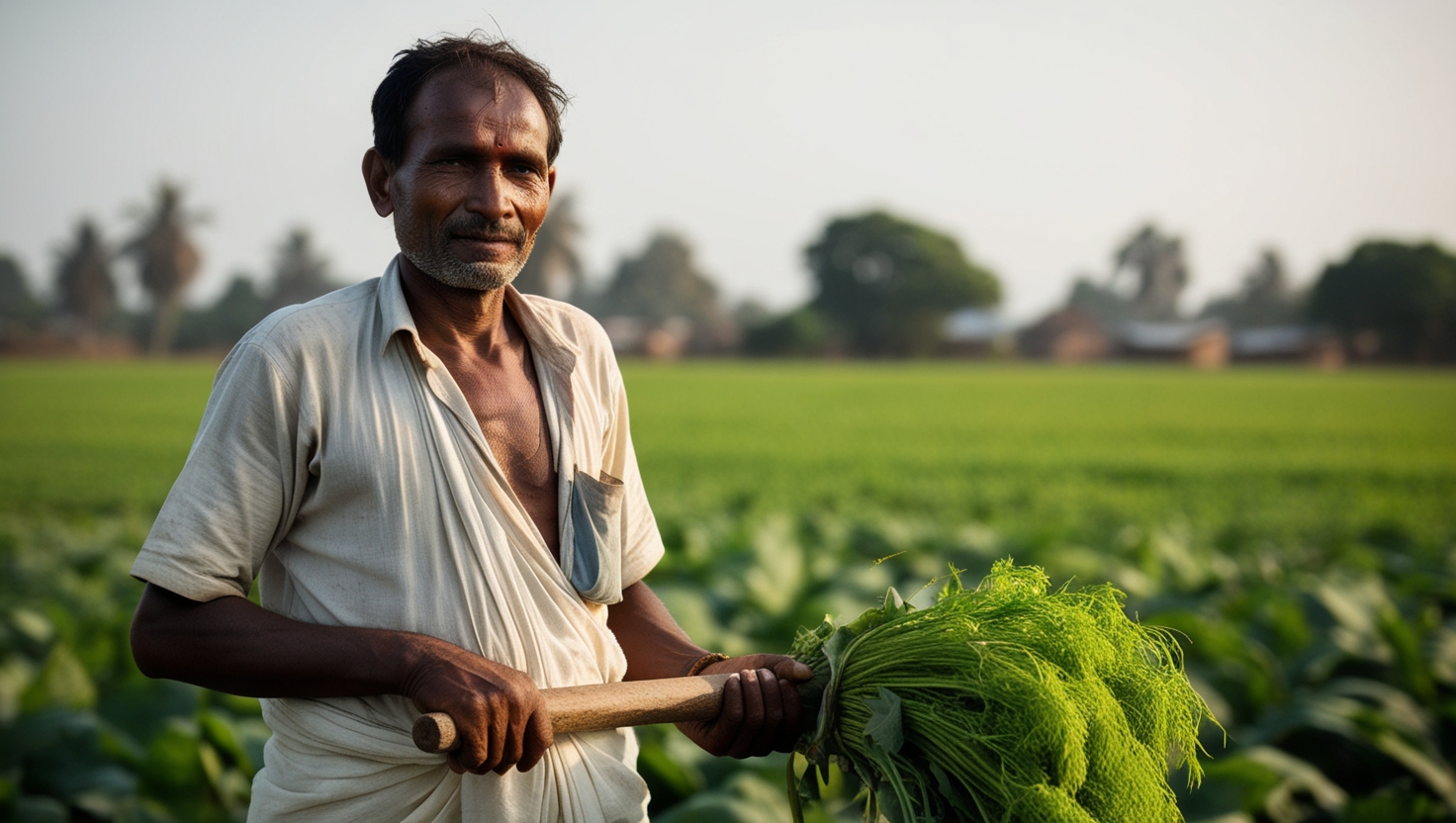The Eyes That Feed Us: Protecting Rural Vision from Pesticide Exposure
Updated on: June 06, 2025

Introduction:
India has one of the world’s largest agricultural labor forces, with approximately 41.49% of the total workforce engaged in agriculture and allied activities (World Bank, 2023). In rural India, where protective measures are often insufficient and awareness is limited, agricultural workers are regularly exposed to pesticides. This chronic and often unprotected exposure poses significant health risks, particularly to the ocular surface.
The ocular surface—which includes the cornea, conjunctiva, and tear film—is highly susceptible to chemical irritants present in pesticides. Repeated exposure can lead to both acute and chronic eye disorders such as conjunctivitis, keratitis, dry eye disease, and in severe cases, vision-threatening complications. These visual impairments can reduce quality of life, decrease productivity, and affect socioeconomic outcomes in farming communities (Reddy et al., 2017).
Chemical Classes and Their Ocular Toxicity
Different pesticides exert varying toxic effects depending on their chemical structure:
- Organophosphates (e.g., chlorpyrifos, malathion): Inhibit acetylcholinesterase, leading to cholinergic overstimulation. Ocular symptoms may include pupil constriction (miosis), blurred vision, and damage to the optic nerve (optic neuropathy). (Jaga & Dharmani, 2006).
- Carbamates (e.g., carbaryl, aldicarb): Share a mechanism with organophosphates but with generally reversible effects; often cause photophobia and ocular irritation (Eddleston et al., 2008).
- Pyrethroids (e.g., cypermethrin, deltamethrin): Linked with stinging, burning sensations, and allergic conjunctival responses (Shafer et al., 2005).
- Herbicides (e.g., paraquat): Extremely toxic to ocular tissues; associated with corneal burns and potential vision loss (Wilks et al., 2008).
- Fungicides (e.g., mancozeb, captan): Can provoke chronic conjunctival inflammation and allergic responses on repeated exposure (Kishi et al., 2015).
Ocular Effects of Pesticide Exposure: Impact on Ocular Structures
- Conjunctiva: Often the first to react, showing symptoms like redness, irritation, and excessive tearing due to inflammation from chemical exposure (Kumar et al., 2021).
- Cornea: Susceptible to chemical burns, keratitis, and ulceration, which may cause pain, photophobia, and blurred vision (Mansour et al., 2020).
- Tear Film: Exposure to pesticides destabilizes the tear film, contributing to dry eye disease. This may be exacerbated by meibomian gland dysfunction and impaired lacrimal gland function, both reducing lipid and aqueous tear secretion respectively (Gupta et al., 2019).
Inhalation and Systemic Effects
- Reflex Tearing: Reflex tearing is triggered as a protective response when the eyes are exposed to airborne chemical irritants (Weikel & Taylor, 2012).
- Ocular Surface Irritation: Symptoms include burning, discomfort, and redness (Kamble & Sinha, 2019).
- Tear Film Disruption: Exposure to airborne chemicals can destabilize the tear film, leading to increased irritation and worsening of dry eye symptoms. (Gupta et al., 2019).
- Systemic Toxicity: Some pesticides, after systemic absorption, can damage the optic nerve, leading to reduced visual acuity or even blindness (London et al., 2005).
Mechanisms of Ocular Injury
Several biological pathways contribute to pesticide-induced ocular toxicity:
- Cholinergic Overstimulation: Organophosphates and carbamates inhibit acetylcholinesterase, leading to excessive neurotransmitter activity and pupil constriction, tearing, and visual blurring (Jaga & Dharmani, 2006).
- Oxidative Stress: Herbicides like paraquat generate reactive oxygen species, damaging ocular surface cells (Bus & Gibson, 1984).
- Inflammation: Prolonged exposure to chemical irritants provokes inflammatory reactions in the conjunctiva and cornea (Kumar et al., 2021).
- Allergic Mechanisms: Certain compounds can elicit hypersensitivity reactions, resulting in allergic conjunctivitis (Shafer et al., 2005).
Management Strategies:
Effective management of pesticide-induced ocular injuries involves a combination of prevention, emergency care, and medical intervention.
1. Preventive Measures
- Use of protective eyewear and face masks during pesticide application.
- Avoiding spraying during windy conditions and utilizing enclosed or directed spray systems.
- Hand hygiene and refraining from touching eyes while handling chemicals (WHO, 2021).
2. First Aid
- Immediate eye irrigation with clean water or saline water.
- Refrain from rubbing the eyes, as it can aggravate irritation and cause additional mechanical injury
3. Medical Treatment
- Use lubricating eye drops (artificial tears) to relieve dry eye symptoms.
- Anti-inflammatory or antibiotic eye drops for infections or persistent inflammation.
- Apply warm compresses and maintain proper lid hygiene.
4. Education and Follow-Up
- Schedule regular eye examinations to enable early detection and timely treatment of ocular conditions.
- Conduct community health education to raise awareness about the ocular hazards of pesticide exposure and emphasize the importance of using eye protection.
Conclusion
The ocular surface is a critical yet often overlooked target of pesticide toxicity among Indian agricultural workers. From conjunctivitis to vision loss, the spectrum of eye disorders linked to pesticide exposure is broad and serious. Incorporating preventive safety practices, improving community awareness, and ensuring regular eye care are essential to mitigate these effects and preserve visual health in rural farming populations.
Written By:
Mr. Ritesh Rohilla
3rd year B. Optometry ,SGT University
Ms. Tsering Lamu Shongmu
Assistant Professor
FAHS, SGT University

